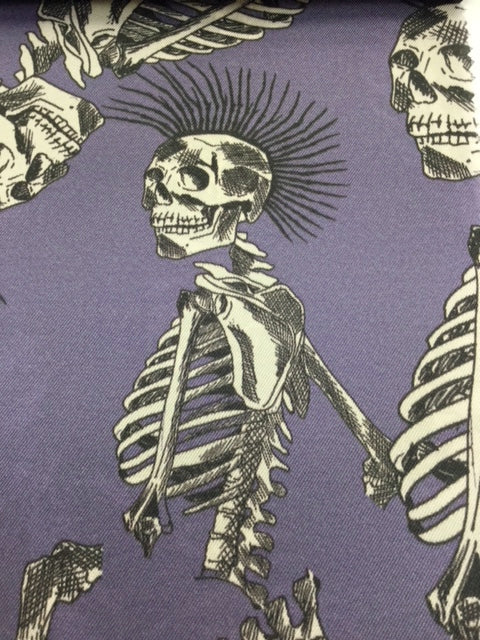
The Skeleton Lining
Share
A Skeleton Lining may sound like a good idea for a Halloween costume - and a quick Google search will show you many amusing options, but it is mainly a term used in bespoke tailoring for the simple structural lining used in ‘unlined’ jackets.
While a completely unlined jacket is possible, there are still some elements of reinforcement that are needed to give a garment structure and strength. This reinforcement can be made from the same material as the outer shell of the jacket or a separate silk or cotton drill. A skeleton lining is generally a very thin border line around the edges of the garment. When the skeleton is made using a contrast fabric or colour, it resembles a skeletal structure; hence, the name.

This technique has been employed in tailoring for many years, but it is a relatively modern adaptation in footwear. Shoes have generally always required a full lining to withstand the pressure of the 19th century footwear mechanised lasting processes, but as shoe manufacturing has evolved, this lighter construction method has become more popular.
A skeleton lining in footwear is usually a light lining-weight calfskin that is cut to follow the borders of the upper. The border is used around the collar, the toe, the heel and the tongue - giving the shoe just enough structure to hold the shape and provide structure for a good fit. The skeleton lining allows the upper material to maintain its natural ‘hand’ and creates a soft, super-flexible upper.

This is often employed with suede loafer and desert boots where a heavier weight, single thickness suede is used to create a lightweight, barefoot design for the summer season.

Both the M+R Desert Boot and Summer Suede Loafers utilise a Skeleton Lining to give the suede upper a soft, flexible quality that is like wearing a pair of slippers.
